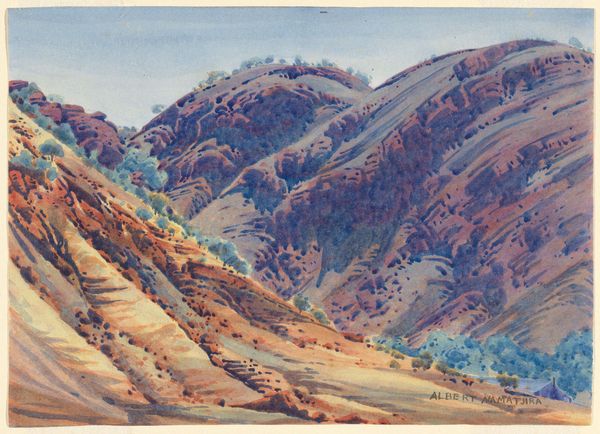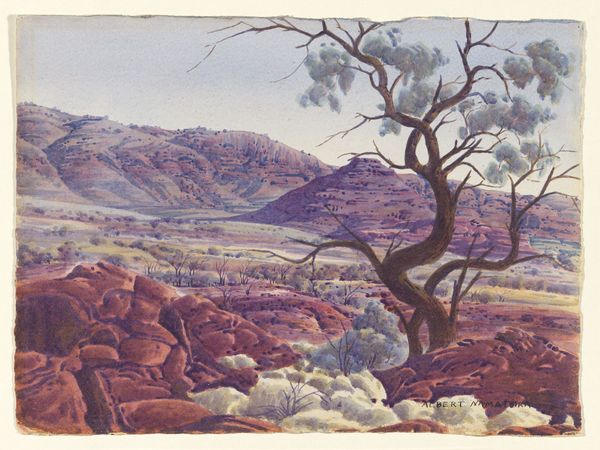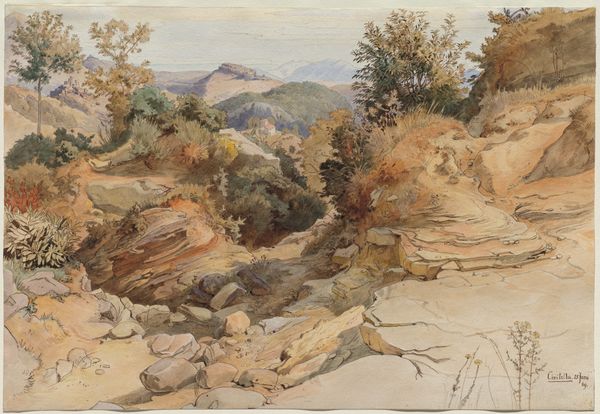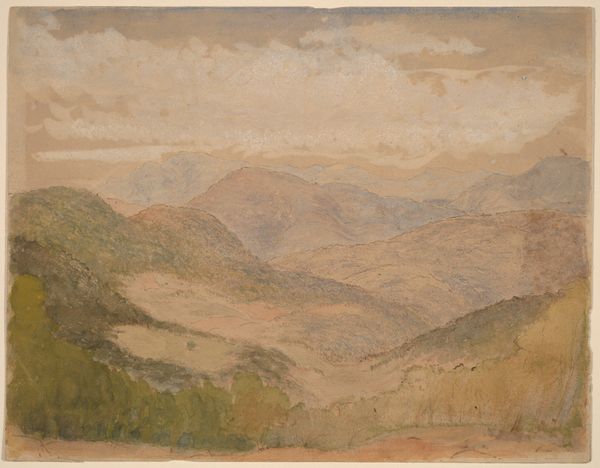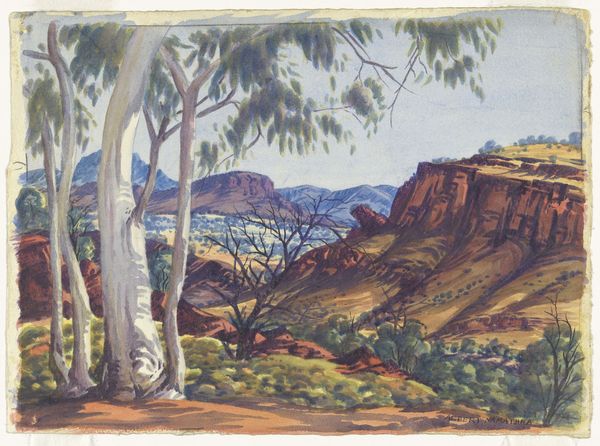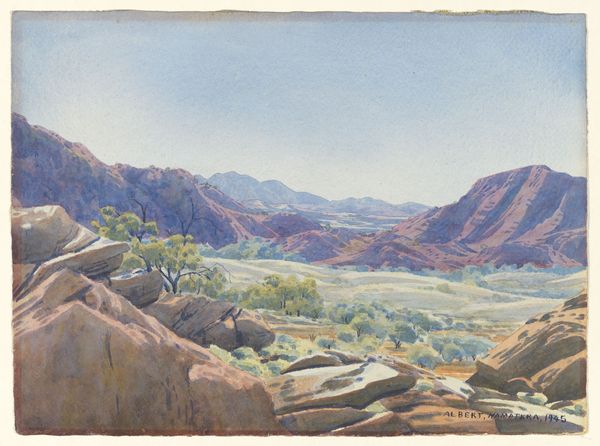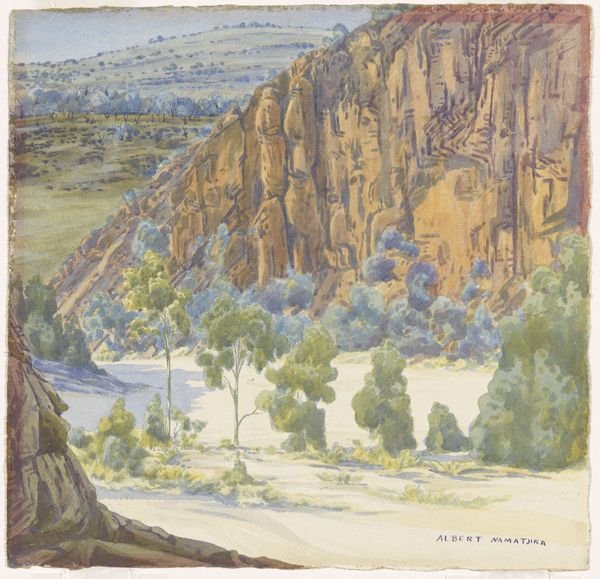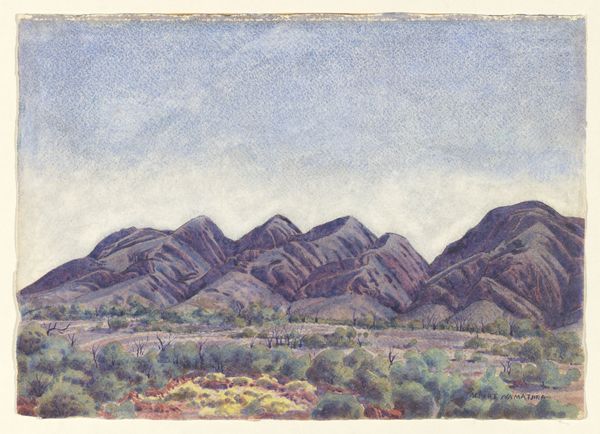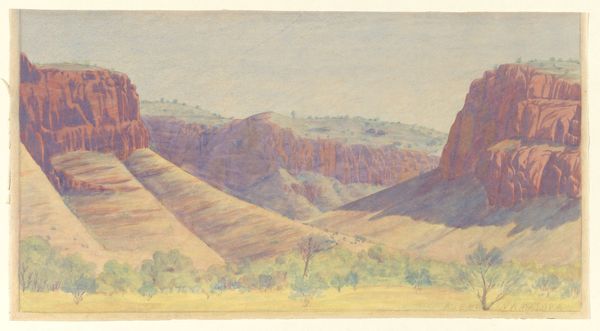
painting, plein-air
#
painting
#
plein-air
#
landscape
#
impressionist landscape
#
oil painting
Copyright: Albert Namatjira,Fair Use
Curator: Standing before us is Albert Namatjira's 1945 watercolor titled "Near Ormiston Gorge, West MacDonnell Ranges, Central Australia." Editor: There's a powerful sense of depth here, wouldn't you agree? The layering of those mountainous forms pulls you right into the heart of the Australian outback. And the colour choices really set an intense, almost haunting, mood. Curator: Absolutely. Ormiston Gorge holds immense significance for the Western Arrernte people, Namatjira's people. Waterholes are important for ceremonial, symbolic, and everyday survival—these gorges provided refuge, so it’s not just a landscape. Editor: So, by portraying it, Namatjira's watercolor goes beyond the merely descriptive, imbuing it with a resonance that connects the physical place to cultural memory. I also note that even within the somewhat muted color palette, there is incredible articulation. Semiotically, these details underscore the uniqueness of the place he's chosen to represent. Curator: Precisely! And it’s a reclamation too. For years, Aboriginal art had been defined, exoticised. Namatjira adapted Western landscape techniques, mastering them, but painted his country, asserting its importance, his belonging. He essentially created an entirely new genre— an Indigenous Australian watercolour tradition. Editor: That tension—between the Western medium and the Indigenous subject matter—is visually so compelling. It forces a sort of double reading. My gaze, mediated by European painting styles, then disrupted by a place and story I have to re-think in terms of cultural specificity and impact. The technique becomes an essential carrier of layered cultural and social meanings. Curator: And this blend allowed him to share his culture with a broader audience and negotiate this tightrope of cultural understanding that persists. So, consider its historical place—what messages were communicated across divides? Editor: A powerful landscape certainly capable of bridging artistic traditions and cultural perspectives. Curator: Indeed, its importance extends beyond aesthetics.
Comments
No comments
Be the first to comment and join the conversation on the ultimate creative platform.
